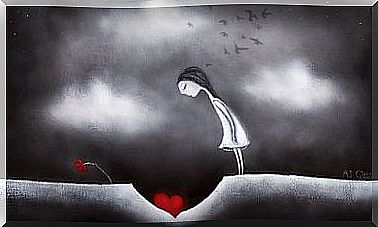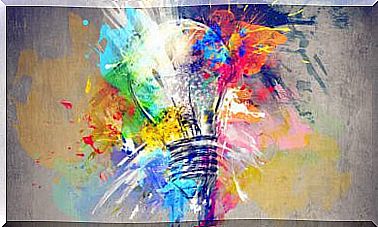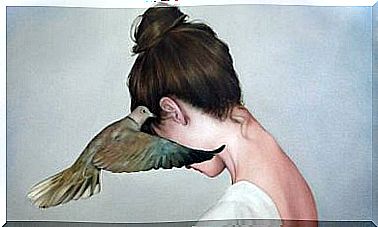Daily Gestures Explained By Neuroscience

Neuroscience has studied various daily gestures that make us reflect on the great complexity of the human being. Day after day, studies are underway on the biological processes involved in these actions, in the thoughts and feelings of human beings, but the mysteries are still many.
Specifically, some so-called normal gestures are enormously complex from a physiological point of view. In addition to that, they give us an idea of the numerous expressions of the human brain. For this reason, the topic has aroused the interest of many scientists and fascinates everyone.
Yet the neuroscientific description of some everyday gestures goes beyond their biological nature. The human body is biological, but it is also symbolic. The brain makes us deeply autonomous individuals, because it represents a highly complex nervous network.
5 daily gestures explained by neuroscience
1. Blush
The tendency to blush has been explained by neuroscience, at least from a physiological point of view. And we want to underline “at least” why until now science has not been able to fully explain why we blush. We are the only species whose skin changes color and that is why Darwin spoke of blushing as the “most human of expressions”.
Science tells us that when faced with an embarrassing situation, the body releases adrenaline. This phenomenon stimulates vasodilation, which is necessary to increase blood flow and oxygen circulation.
The veins in the face dilate and let more blood pass through than normal, which is why redness appears. From a psychological point of view, however, it corresponds to feeling betrayed.

2. Kissing, among the daily gestures explained by neuroscience
The kiss is not a universal expression, that is, it is not present in all cultures, but still in most of them. Some primates also kiss, such as chimpanzees and bonobos, but they do not press their lips together or exchange saliva.
In the human being the question is different. Male saliva contains a protein that is dependent on testosterone. The presence of this protein allows the female to recognize the male most suitable for reproduction.
At the same time, menstruation and ovulation change female breath. During the kiss, the man detects this aspect and understands when a woman is predisposed to procreation.
3. Generosity
A study conducted by the Psychology Department of the University of Lubeck in Germany established the brain mechanisms involved in giving. Scholars started from the idea that altruism is not only the product of education, but also corresponds to a biological mechanism.
After conducting an experiment on some volunteers, it was possible to establish that the most generous people have two characteristics. The first is that the brain area called the temporoparietal junction (TPJ, from the English acronym) is more active.
The second is that this area is closely related to the striated nucleus, relevant for happiness. The human being is genetically predisposed to be generous.
4. Biting your nails among the daily gestures studied by neuroscience
Nail biting is another daily gesture explained by neuroscience, although it is perceived as an irrational attitude. We know that up to 30% of the adult population has this habit. Among children, the percentage is even higher.
In a first phase this habit obeys a mechanism to release tensions. This tension generates an accumulation of energy which is reduced when we bite our nails.
Some experiments conducted on guinea pigs have shown an interesting aspect. After walking through the same maze several times, these animals were able to find a way to go through it. From that moment on, they always walked the same path.
When this happened, the brain waves were slower. In other words, the habit calms down, helps manage the energy available.

5. The crying
There are still many enigmas about human crying. Tears have been studied by neuroscience, but only in part. First of all, we must be clear that there are physiological tears and emotional tears. The first appear when, for example, we peel an onion. The latter are formed in the presence of certain emotional states.
According to William H. Frey, a biochemist at St. Paul-Ramsey Medical Center, Minnesota, emotional tears contain manganese, potassium chloride, prolactin, endorphins, adenocorticotropin, and leucine enkephalin. By expelling these substances, emotional tension is reduced.
Nonetheless, Dutch expert Ad Vingerhoets assures that crying is a way of expressing abandonment. A kind of instinctive plea for help.
The brain is still today a mysterious reality on which science has barely made any progress. Although there are many news on some gestures that we perform every day, we are still far from fully understanding many phenomena.









